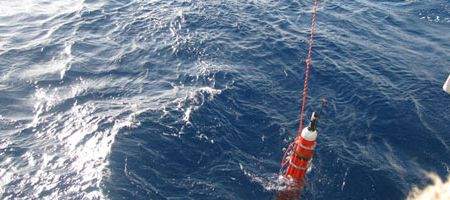NASA, the US Navy and Scripps Institution of Oceanography at UC San Diego have successfully tested the first robotic underwater vehicle to be powered entirely by natural ocean thermal energy.

The Sounding Oceanographic Lagrangrian Observer Thermal RECharging (SOLO-TREC) vehicle uses a new thermal recharging engine powered by the natural temperature differences found at different ocean depths.
It’s now completed a three-month endurance test off the coast of Hawaii, completing more than 300 dives to a depth of 500 meters. Its thermal recharging engine produced about 1.7 watt-hours of energy per dive, enough to power its science instruments, GPS receiver, communications device and buoyancy-control pump.
“Energy harvesting from the natural environment opens the door for a tremendous expansion in the use of autonomous systems for naval and civilian applications,” said Thomas Swean, the Office of Naval Research program manager for SOLO-TREC.
“This is particularly true for systems that spend most of their time submerged below the sea surface, where mechanisms for converting energy are not as readily available. The JPL/Scripps concept is unique in that its stored energy gets renewed naturally as the platform traverses ocean thermal gradients, so, in theory, the system has unlimited range and endurance. This is a very significant advance.”
SOLO-TREC draws upon the ocean’s thermal energy as it alternately encounters warm surface water and colder conditions at depth. Key to its operation are the carefully selected waxy substances known as phase-change materials that are contained in 10 external tubes.
As the float surfaces and encounters warm temperatures, the material melts and expands; when it dives and enters cooler waters, the material solidifies and contracts.
The expansion of the wax pressurizes oil stored inside the float. This oil periodically drives a hydraulic motor that generates electricity and recharges the vehicle’s batteries. Energy from the rechargeable batteries powers the float’s hydraulic system, which changes the float’s volume, and hence buoyancy, allowing it to move vertically.








